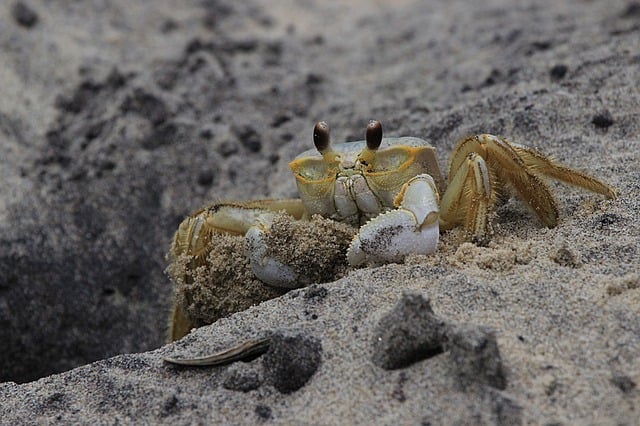Armadillos, attracted to Lakewood's urban environment by food sources like garden pests and compost, often take up residence in attics, causing destructive behavior. Identifying signs such as unusual night-time noises, scrapes on floors and walls, soil mounds, and white pellet droppings is crucial for taking action. Effective armadillo management requires strategic approaches, including distinguishing between armadillo and raccoon infestations (both sharing similar habitats), sealing entry points, and removing attractive resources. Professional wildlife control services are vital for safe removal, preventing future conflicts, and maintaining a balanced local ecosystem.
Armadillos, with their unique armor-like shells, are a common sight in Lakewood’s diverse landscape. While they contribute to the local ecosystem, an excessive population can lead to unwanted interactions with residents. This article explores effective wildlife control methods for armadillo management, focusing on identifying signs of infestation, such as damage to attics and gardens. Understanding these creatures’ behavior is key to implementing successful control programs in Lakewood, ensuring both the safety of these animals and peace of mind for homeowners concerned about potential raccoon infestations.
- Understanding Armadillos: Behavior and Habitat in Lakewood
- Identifying Signs of Armadillo Infestation in Your Attic
- Effective Wildlife Control Programs for Armadillo Management
Understanding Armadillos: Behavior and Habitat in Lakewood

Armadillos, known for their distinctive armor-like shell, are unique creatures that inhabit various environments, including the urban areas of Lakewood. Understanding their behavior and habitat is crucial when implementing wildlife control programs. These nocturnal animals are primarily insectivores, feeding on ants, termites, and other insects, which they locate using their strong sense of smell. They are often attracted to residential areas due to the availability of food sources like garden pests and compost piles.
In Lakewood, armadillos frequently make their homes in attics, seeking shelter from predators and extreme weather. Signs of a raccoon infestation, such as strange noises, holes in the roof, or evidence of scurrying, might indicate an armadillo presence. This behavior can be both intriguing and problematic for homeowners, prompting the need for effective wildlife control measures to ensure peaceful coexistence with these fascinating yet potentially destructive visitors.
Identifying Signs of Armadillo Infestation in Your Attic

If you suspect an armadillo has taken up residence in your Lakewood home, particularly in your attic, it’s crucial to identify signs early on. Armadillos are known for burrowing and often gain access to attics through small openings or gaps around pipes, vents, and wires. Look out for unusual noises coming from the attic space during the night, as these creatures are most active after dark. Scratching and clattering sounds may indicate their presence as they forage for food.
Another clear sign is visible evidence such as fresh scrapes on floors or walls leading up to the attic access point. Armadillos also leave behind characteristic mounds of soil outside your home, which might suggest an entry point nearby. Additionally, keep an eye out for small piles of white pellets, which are the armadillos’ droppings. These signs can help you determine if professional wildlife control services are needed to safely remove the armadillos and prevent future infestations.
Effective Wildlife Control Programs for Armadillo Management

Effective wildlife control programs for armadillo management often involve a combination of strategies tailored to specific environmental and ecological contexts. One crucial approach is understanding the signs of a raccoon infestation, as raccoons are known to share similar habitats with armadillos in areas like Lakewood. Signs such as unusual noise (scrabbling or drumming), distinct odor, evidence of digging, and damaged property can indicate the presence of these creatures.
By identifying these signs early, homeowners can proactively address potential conflicts before they escalate. This includes sealing entry points, removing attractive resources like water sources or food waste, and employing exclusion methods to prevent armadillos from entering homes or gardens. Professional wildlife control services play a vital role in implementing these strategies, ensuring effective management while minimizing the impact on local ecosystems.
Armadillo control programs are essential for maintaining a healthy balance between these creatures and human habitats, especially in urban areas like Lakewood. By understanding their behavior and identifying signs of infestation, such as persistent digging or peculiar odors, homeowners can proactively manage potential issues. Effective wildlife control methods, including non-lethal strategies, should be employed to resolve armadillo problems safely and humanely. Remember, recognizing the subtle indications of an armadillo’s presence in your attic is the first step towards effective management, ensuring a peaceful coexistence with these fascinating creatures.
